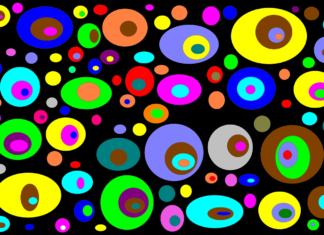Whatnot is a versatile term that can refer to a variety of different things, depending on the context in which it is used. It is often employed to denote miscellaneous or unspecified items, objects, or actions. The word “whatnot” itself is an interesting linguistic construction, combining the pronoun “what” with the noun “not” to create a distinct word that is both intriguing and somewhat elusive. Its ambiguous nature allows it to be applied in various situations, making it a flexible and adaptable term within the English language.
The term “whatnot” has a long history, dating back several centuries. Its origins can be traced to the Middle English period, where it was initially used as a compound word to mean “what thing,” indicating an unspecified object or item. Over time, the term evolved and took on a broader meaning, encompassing a wide range of miscellaneous or indeterminate things. In this sense, “whatnot” acts as a catch-all term, encompassing various objects, ideas, or actions that may not fit into specific categories.
In contemporary usage, “whatnot” can refer to a diverse array of objects or items that are considered miscellaneous or non-specific. It is often used when referring to a collection of odds and ends or various curiosities. For example, one might say, “The shelf was cluttered with books, trinkets, and whatnot,” indicating that the shelf was adorned with a variety of miscellaneous items. In this context, “whatnot” serves as a placeholder, representing the idea that there are additional unspecified items of minor importance present.
The versatility of the term “whatnot” extends beyond physical objects and can also be applied to abstract concepts or actions. For instance, one might say, “She filled her day with errands, chores, and whatnot,” implying that the person engaged in a range of miscellaneous activities without specifically listing them. Similarly, “whatnot” can be used to refer to vague or unspecified ideas, as in the sentence, “They discussed politics, philosophy, and whatnot,” suggesting that a broad range of topics were covered without explicitly specifying them.
The term “whatnot” can also be utilized as a linguistic device to add a sense of informality or nonchalance to a conversation or piece of writing. By incorporating “whatnot” into the discourse, speakers or writers can create a more relaxed and casual tone. It serves as a conversational filler, allowing individuals to express a general idea without going into great detail or specificity. Furthermore, the use of “whatnot” can help to avoid repetitiveness and monotony in speech or writing, as it can substitute for a list of related but unspecified items or actions.
Despite its usefulness and adaptability, the term “whatnot” does have some limitations. Its vagueness can be both an asset and a hindrance, as it lacks precision and specificity. While this can be advantageous in certain situations, such as when describing a collection of miscellaneous objects, it can be less desirable when clarity and specificity are required. In formal or technical contexts, the use of “whatnot” may be perceived as imprecise or vague, and it is often advisable to opt for more specific language in these instances.
whatnot is a multifaceted term that has evolved over time to encompass a wide range of meanings and applications. Its versatility allows it to be used in various contexts, referring to miscellaneous objects, actions, or ideas that are unspecified or non-specific. By incorporating “whatnot” into conversation or writing, individuals can convey a sense of informality, add variety to their expression, and avoid repetitive language.
As mentioned earlier, “whatnot” is a versatile term that can be used to refer to miscellaneous or unspecified items, objects, or actions. It serves as a catch-all phrase, encompassing a wide range of things that may not fit into specific categories or require explicit identification. This flexibility makes “whatnot” a valuable linguistic tool for expressing general ideas, avoiding repetitiveness, and adding informality to conversations or written texts.
The term “whatnot” has a long history and can be traced back to Middle English, where it originated as a compound word meaning “what thing.” This original definition reflects the core essence of “whatnot” as a word that represents an unspecified object or item. Over time, its meaning expanded to encompass a broader range of miscellaneous or indeterminate things.
In everyday usage, “whatnot” is often employed when describing a collection of miscellaneous objects or items. For instance, one might say, “The table was cluttered with pens, paperclips, keys, and whatnot,” indicating that various miscellaneous items were scattered on the table. In this context, “whatnot” acts as a placeholder, allowing the speaker or writer to refer to additional unspecified items without going into detail. It serves to convey the notion that there are other minor objects present but may not warrant specific mention or enumeration.
Furthermore, “whatnot” can be used to indicate a variety of actions or activities without explicitly specifying each one. For example, someone might say, “I’ve been running errands, cleaning the house, doing laundry, and whatnot,” implying that they have been engaged in a range of miscellaneous tasks. Again, the term functions as a conversational filler, allowing the speaker to provide a general overview of their activities without providing a comprehensive list.
In addition to physical objects and actions, “whatnot” can also be applied to abstract concepts or ideas. It serves as a shorthand for referring to a broad range of unspecified topics or discussions. For instance, one might say, “We talked about art, literature, philosophy, and whatnot,” indicating that a variety of subjects were covered without explicitly listing all of them. In this sense, “whatnot” serves as a convenient tool for summarizing or alluding to a multitude of related but unspecified ideas.
The informality of “whatnot” makes it particularly useful in casual conversations, where precision or exhaustive detail may not be necessary or desired. Its inclusion can add a relaxed and conversational tone to a discussion, helping to create a more informal atmosphere. For example, in a friendly chat, someone might say, “Let’s grab some food, catch a movie, or whatnot,” implying a willingness to engage in various activities without explicitly specifying all the options. By using “whatnot,” the speaker leaves room for flexibility and open-endedness, allowing for spontaneous decision-making.
Moreover, “whatnot” can be employed to avoid repetitiveness in speech or writing. Instead of listing multiple related but unspecified items or actions, the term can be used as a concise substitute. For instance, instead of saying, “I need to buy groceries, toiletries, cleaning supplies, and other miscellaneous items,” one could say, “I need to buy groceries, toiletries, cleaning supplies, and whatnot.” This usage streamlines the expression, eliminating the need for an exhaustive list of unspecified items.
However, it is important to note that the vagueness of “whatnot” can also be a limitation. In formal or technical contexts where precision and clarity are crucial, the use of “whatnot” may be perceived as imprecise or even evasive. In these situations, it is advisable to employ more specific language to ensure clear communication. While “whatnot” can be an effective tool for casual conversation, it may not be appropriate in professional or academic settings where precise and detailed language is expected.
It’s worth mentioning that “whatnot” is not the only term that serves a similar purpose. There are other words and phrases that can be used interchangeably, such as “etcetera,” “and so on,” “and the like,” or “and what have you.” These expressions all convey a sense of inclusivity without explicitly enumerating every item or action.
In some cases, the term “whatnot” can also be used humorously or ironically. By using it in unexpected or exaggerated ways, speakers or writers can inject a touch of whimsy or playfulness into their expression. For instance, someone might say, “I went to the store and bought milk, bread, a parrot, and whatnot,” intentionally including an absurd or unexpected item for comedic effect.
Furthermore, “whatnot” can be utilized as a rhetorical device to create emphasis or add a sense of mystery or intrigue. By using it in a sentence, the speaker or writer can allude to additional information or possibilities without explicitly revealing them. For example, a suspenseful novel might include a sentence like, “She opened the drawer and found a letter, a photograph, and whatnot,” leaving readers curious about the unspecified contents and eager to discover more.
In certain contexts, “whatnot” can also be associated with the concept of “miscellanea” or “miscellany,” which refers to a collection of diverse or miscellaneous items or writings. A miscellany may include a range of unrelated topics, anecdotes, poems, or other creative works. In this sense, “whatnot” can be seen as a representation of the miscellaneous or diverse nature of such collections.
In conclusion, “whatnot” is a versatile term that has evolved over time to encompass a broad range of meanings and applications. Its primary function is to represent miscellaneous or unspecified objects, actions, or ideas. By using “whatnot” in conversation or writing, individuals can express general ideas, add informality, avoid repetitiveness, and create a more relaxed tone. However, it’s important to note that the term’s vagueness may not be suitable for formal or technical contexts where precision and clarity are required. Nonetheless, “whatnot” remains a valuable linguistic tool, allowing for flexibility and adaptability in communication.






















